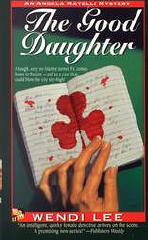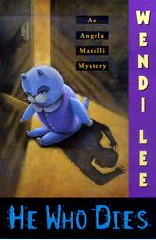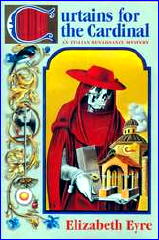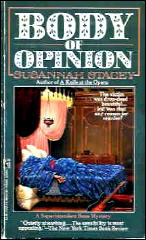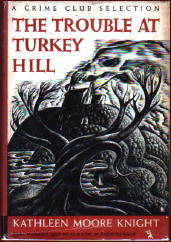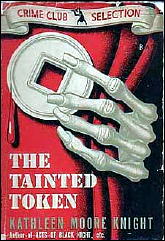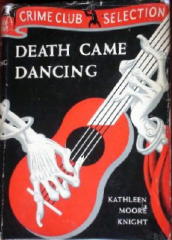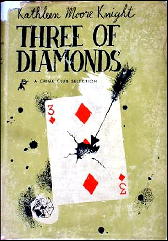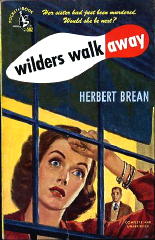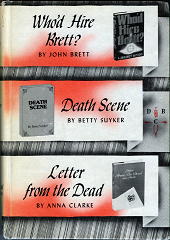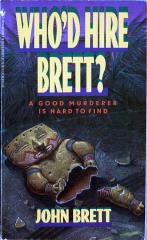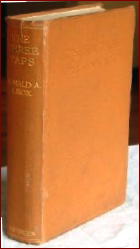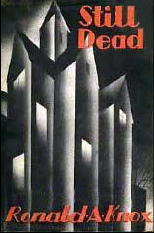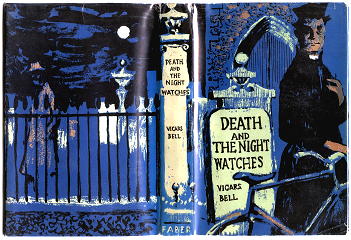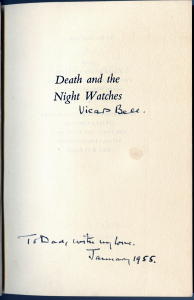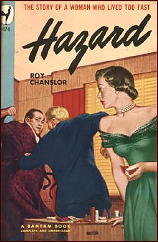ANTHONY ARMSTRONG and the JIMMIE REZAIRE Novels
by David L. Vineyard.
Anthony George Armstrong Willis (1897-1972) was a Canadian novelist and playwright best remembered today for his play Ten Minute Alibi and the novels The Room at the Hotel Ambre (also a play) and The Strange Case of Mr. Pelham (adapted for Alfred Hitchcock on television, and as the 1970 film The Man Who Haunted Himself, directed by Basil Deardon).
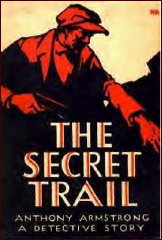
From 1927 to 1932, however, he penned five of the best thrillers from the heyday of the form about gentleman crook Jimmie Rezaire and his ‘secret service’ adventures in The Trail of Fear (1927), The Secret Trail (1929), The Trail of the Lotto (1930), The Trail of the Black King (1931), and The Poison Trail (1932).
In their A Catalogue of Crime Jacques Barzun and Wendell Hertzig Taylor said of The Trail of Fear, the first Jimmie Rezaire novel:
“Not strictly a detective story, but a good example of the chase after dope smugglers of the type popular in the late twenties … the chase goes on continuously for 275 pages, and it holds the attention surprisingly well … the hero is not a superman, and his strengths and weaknesses are well matched.” (page 37)
What sets the Rezaire novels apart from the adventures of Bulldog Drummond, Sydney Horler’s Tiger Standish, Wyndham Martin’s Anthony Trent, and the other colorful adventurers of the era was both Armstrong’s sense of drama and literacy and Jimmie’s character.
The slight, attractive Rezaire was no steel-thewed six-footer laying the enemy about him with a single blow, no brighter buccaneer or durable desperado, but a clever criminal who enjoyed the game of pitting his brains against the police until he allowed himself to be caught and served a term in the pen.
In The Trail of Fear he’s still a criminal and drawn into a bit of secret service work which suits his nature. In The Secret Trail, just out of prison, he teams up with his one time girl friend Vivienne and Harry Hyslop (aka H.H.), down from Oxford after a forgery scandal, who have been running a shop lifting scam. Jimmie opens a Private Inquiry agency and almost immediately gets drawn into yet another bit of secret service trying to rout a spy ring that has stolen the Murchison bomb sight and plans to smuggle it out of the country to Russia.
The books are primarily chase and pursuit, aided by Armstrong’s understanding of plot construction and the line of suspense. Unlike many writers of the period Armstrong doesn’t indulge in tiresome blathering and the silly ass dialogue that mars the Drummond books and others from this time frame.
The Rezaire books are a modern read, with Jimmie a more complex hero than most. Though he loves the game and plays to win he is also attractively human and given to doubts and concerns. He’s also apt to rely on his wits too much, which is where H.H. comes in as a good man with his fists and a gun. H.H. would be the hero of any other series of the era, but Armstrong is careful to show us the limit of the brawn-over-brains type when pitted against the kind of super criminals Jimmie and company cross swords with on a regular basis.

That said, the books are very much of the period they were written, with the usual foreign spies and drug smugglers (cocaine rings feature in many books of the era, from thrillers to classical detection like Sayers’ Murder Must Advertise), but all done with Armstrong’s superior writing and Rezaire’s more intelligent hero:
“He settled down to his food, but his brain was busy marshalling his information about the sighter. What had he definitely learned from the dead man’s shorthand note? A certain amount at any rate. He knew that there were three if not four men concerned. He knew that the bomb sighter was somewhere in London. He knew that because it was so complicated the secret was safe, and would remain so till it left the country for Paris, where the man Siminski would arrive on the 19th to take it to Russia. He knew that therefore he presumably had six days — for today was the 13th — six days during which the spies apparently had to make some arrangements for ensuring a departure without a hitch by the Calais route. Of course they might try to smuggle it out by means of a motor-boat or airplane, but the boldest way was always the best; a passport, a suitcase, and an innocent appearance would do the trick easily.”
That’s more reasoning and deductive work than in the entire Bulldog Drummond oeuvre. In fact, the fun is watching Jimmie as he thinks and fights his way out the various deadly traps set by the opposition and the chases in fast low slung cars, motor boats, airplanes, and on trains, across rooftops, down foggy roads, through busy London streets, and across the Channel in France.
Armstrong’s understanding of drama keep the books moving swiftly, while the plot unfolds in snappy dialogue and exposition. Here Jimmie’s ex-partner Long Sam is back from America and out to get Jimmie:
They stayed chatting with Viv in her sitting room for nearly an hour. Then the bell rang.
“Sam,” whispered Viv, and the pair were hustled into hiding. They found themselves concealed by a thick curtain which hung across a corner behind the sofa. The one big window of the room was just on the left.
“Don’t come out Jimmie, unless I call you,” pleaded Viv. “Honestly Sam won’t hurt me, but he might go for you if …”
“What about nice little me?” put in Hyslop humorously. “Don’t nobody love me too?”
“And you, H.H.,” added Viv, but something in her eyes told him he didn’t count beside Jimmie — that strange little man with so much ingenuity and so little physical courage.
It should be pointed out that Jimmie is hardly a coward, but having the wit and common sense to know when he’s in danger and the imagination to see what the consequences of his actions might be he’s no steely nerved ice man either. He’s cool and leveled headed in action, but has the good grace to at least sweat the details when he’s bound up in a rug being carried to meet his maker in the trunk of the villain’s speeding salon car.
For anyone interested in the thrillers of the era, the Armstrong books about Jimmie Rezaire offer a better than usual entry point forgoing the blather of the Drummond books, the bullying of Horler’s various heroes, and the gloating Berkeley Gray’s Norman Conquest was prone to.
While they don’t have the sheer spirit and joy of the early Saint adventures by Leslie Charteris, they are clever and fast-paced, and cinematic in the best sense. The jingoism, snobbery, casual racism, and other drawbacks of books of the time are played down, and the writing is crisp and literate without the endless false bon homme of so many of Armstrong’s contemporaries.
Jimmie Rezaire is a complex and interesting protagonist, and one who deserves to be better remembered. Among the armies of Blackshirts, Picaraoons, Gray Phantoms and the like, Jimmie was a breath of fresh air with well-conceived action and a fast pace that modern readers will appreciate, along with a more human and interesting set of heroes than the usual breed of supermen.
— All quotes from The Secret Trail (Macrae Smith, US, 1929).
Bibliographic data: [Taken from the Revised Crime Fiction IV, by Allen J. Hubin.]
REZAIRE, JIMMIE [Anthony Armstrong]
Jimmie Rezaire (n.) Paul, 1927. US title: The Trail of Fear. Macrae-Smith, 1927.
The Secret Trail (n.) Methuen, 1928. Macrae-Smith, 1929.
The Trail of the Lotto (n.) Methuen, 1929. Macrae-Smith, 1930.
The Trail of the Black King (n.) Methuen, 1931. Macrae-Smith, 1931.
The Poison Trail (n.) Benn, 1932. No US edition.

